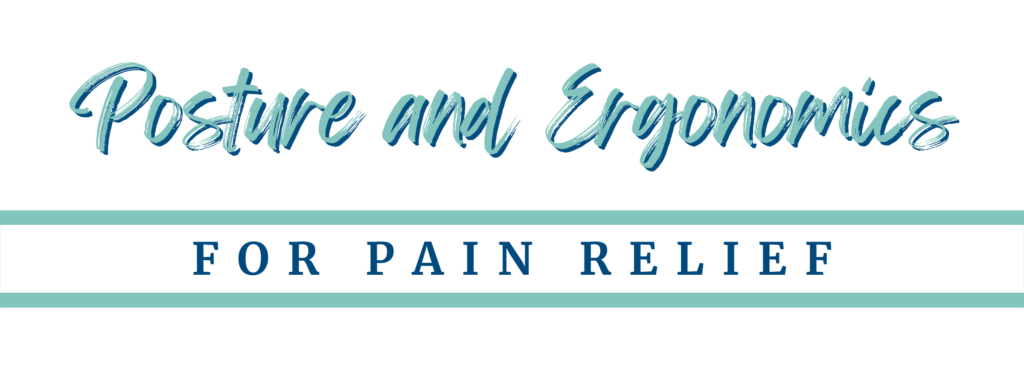

Ergonomics is a concept of fitting an environment and a person to each other in a cohesive manner.
It is an awareness of postural alignment in different positions, spaces, and areas of life to decrease aches and pains. Prolonged positioning, especially when in a stressed posture, over time can have lasting effects that lead to chronic pain or other serious issues. Ergonomics is used as a way to understand and alleviate tension on muscles, joints, and bones to help create a healthier life. By implementing a proper setup and utilizing good body mechanics, the study of ergonomics has shown vast improvements in the quality of life of many people.

Ergonomics is a concept of fitting an environment and a person to each other in a cohesive manner. It is an awareness of postural alignment in different positions, spaces, and areas of life to decrease aches and pains.
Prolonged positioning, especially when in a stressed posture, over time can have lasting effects that lead to chronic pain or other serious issues.
Ergonomics is used as a way to understand and alleviate tension on muscles, joints, and bones to help create a healthier life. By implementing a proper setup and utilizing good body mechanics, the study of ergonomics has shown vast improvements in the quality of life of many people.
A proper ergonomic setup can help reduce and even prevent pain over time. By focusing on alignment and positioning we can affect the amount of strain being put on certain areas of the body. This not only includes positioning a person’s body but utilizing specific tools to make your workspace and environment conducive to a pain-free position. A person that finds they constantly look down at their phone or computer screen may consider raising the height of the monitor so that the neck stays in a neutral position. If a chair prevents someone from placing both feet on the floor with the knees and hips in a good position, a footstool under the feet may support the body better. Or perhaps a person maintains a forward flexed position to look at their computer screens all day. Moving the chair closer to the desk and using a lumbar support pillow will improve upright positioning and decrease the stress placed through the low back, neck, and shoulders.
There are a couple of factors to consider when thinking about ergonomic positioning.
Firstly, every person and environment are different; therefore, ergonomic setup is a completely individualized process. Individuals must learn to create awareness in their own bodies to best apply the concepts of ergonomics. Secondly, ergonomics can be implemented into many different environments and positions but it is ultimately about alignment.
So here are some ways to check your postural alignment.
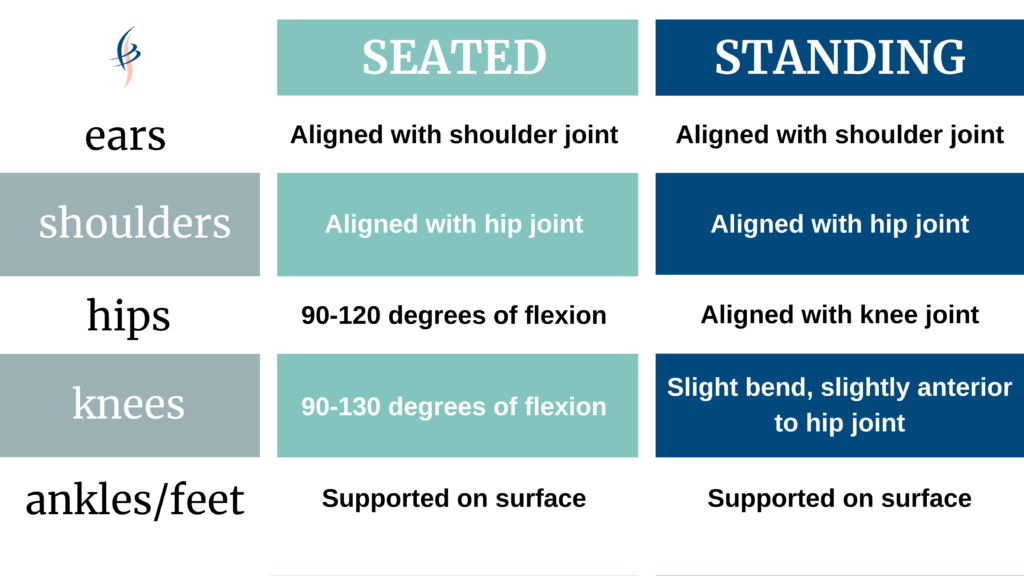
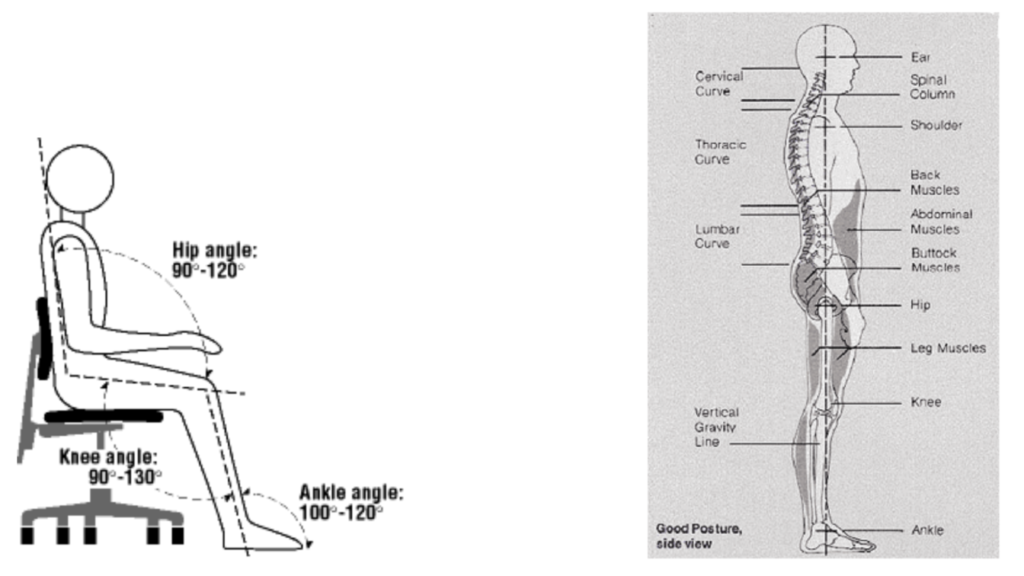
Prolonged positioning breaks down our bodies and creates poor postural awareness that can have lasting effects on the body and is a good indicator of future pain. It is important to focus on these cues when setting up an environment because it gives joints and muscles the least amount of stress from wear and tear on our bodies over the years. So even for individuals with minimal pain it is still recommended to utilize ergonomics to decrease risk of chronic pain in the future.

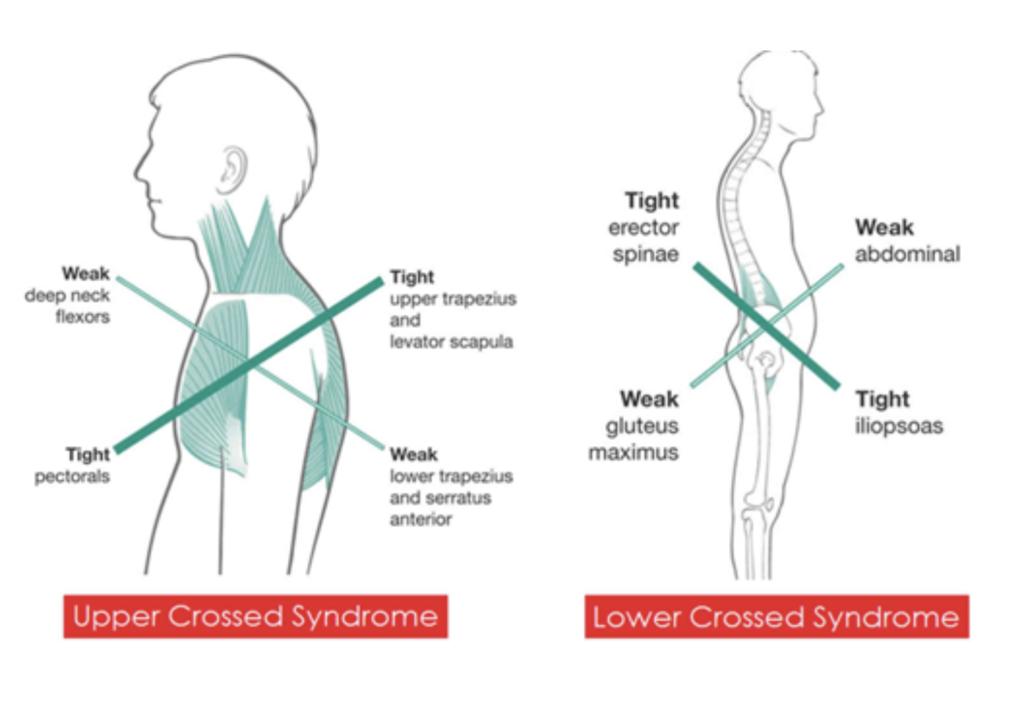
Ergonomic set up is all about creating balance within the body and it is important to note that movement is an extremely important part of decreasing some of the stressors that can cause pain.
Lengthening and stretching overly tight muscles while also working to strengthen and strengthening weak muscles, creates a balance within our bodies to help with excess tension loads.
This picture, shows a common muscle pattern that has developed within many individuals walking around today. This “poor” posture is often caused by excess sitting or leaning forward over a computer or cell phone. Bodies begin to compensate for the excessive forward flexed position by increasing the arch in our low backs in order to stay aligned.
This creates stretched and weak glutes, abdominals, shoulder blade muscles, and deep neck flexors. This also creates tightness through the muscles in the chest, neck, low back, and hips. The tight muscles on one side of the body and weak muscles on the other side of the body contribute to the already misaligned positioning.
Hip Hinge
Good body mechanics with movement is essential in maintaining a healthy back. The Hip hinging, is a vital movement to master to protect your back and reduce risk of injury. Hip hinging makes sure the individual utilizing the large weight bearing joint of the hips and not the lumbar spine with forward bending and lifting. Hip hinging should be used to perform most everyday activities such as getting up and down from a chair or lifting so that we don’t stress the muscles and nerves in our back.
Keeping an active healthy lifestyle is important in combating the effects of poor posture. Exercises, such as Pilates, along with lower back/ hip stretches can help significantly improve pain. The correct exercises can give our bodies the tools we need to improve our postural strength and stability.
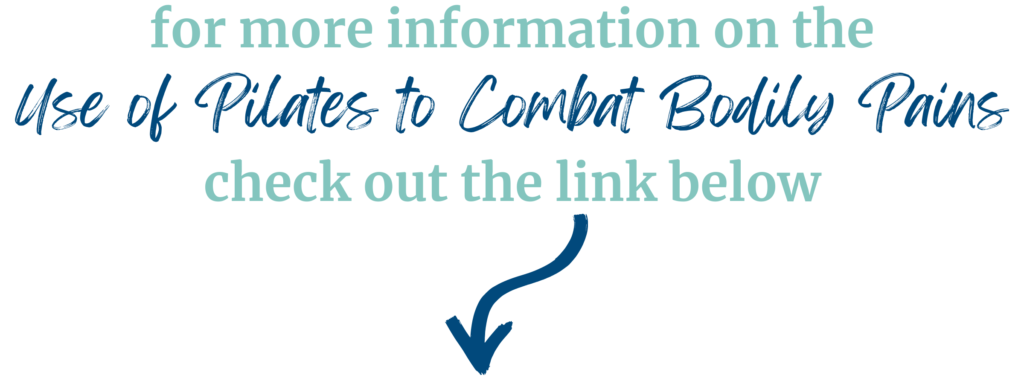
Aside from exercise to maintain good muscle quality, body mechanics is another important aspect when considering the ergonomic setup. To decrease excess stress place on our spines it is important to maintain proper body mechanics when performing everyday activities.
- Maintaining a neutral spine- It is important to keep our backs within their natural curves and focus on maintaining a straight back.
- Hip Hinging- This movement comes from rotating on the ball of our hip joint in order to bend our bodies forward without flexing in our spine and puts the body in a better position to decrease the strain on back muscles and the spine.
- Squatting- Our leg musculature is a very important tool and should be used to help gain power when lifting objects or changing positions, such as standing up from a chair.